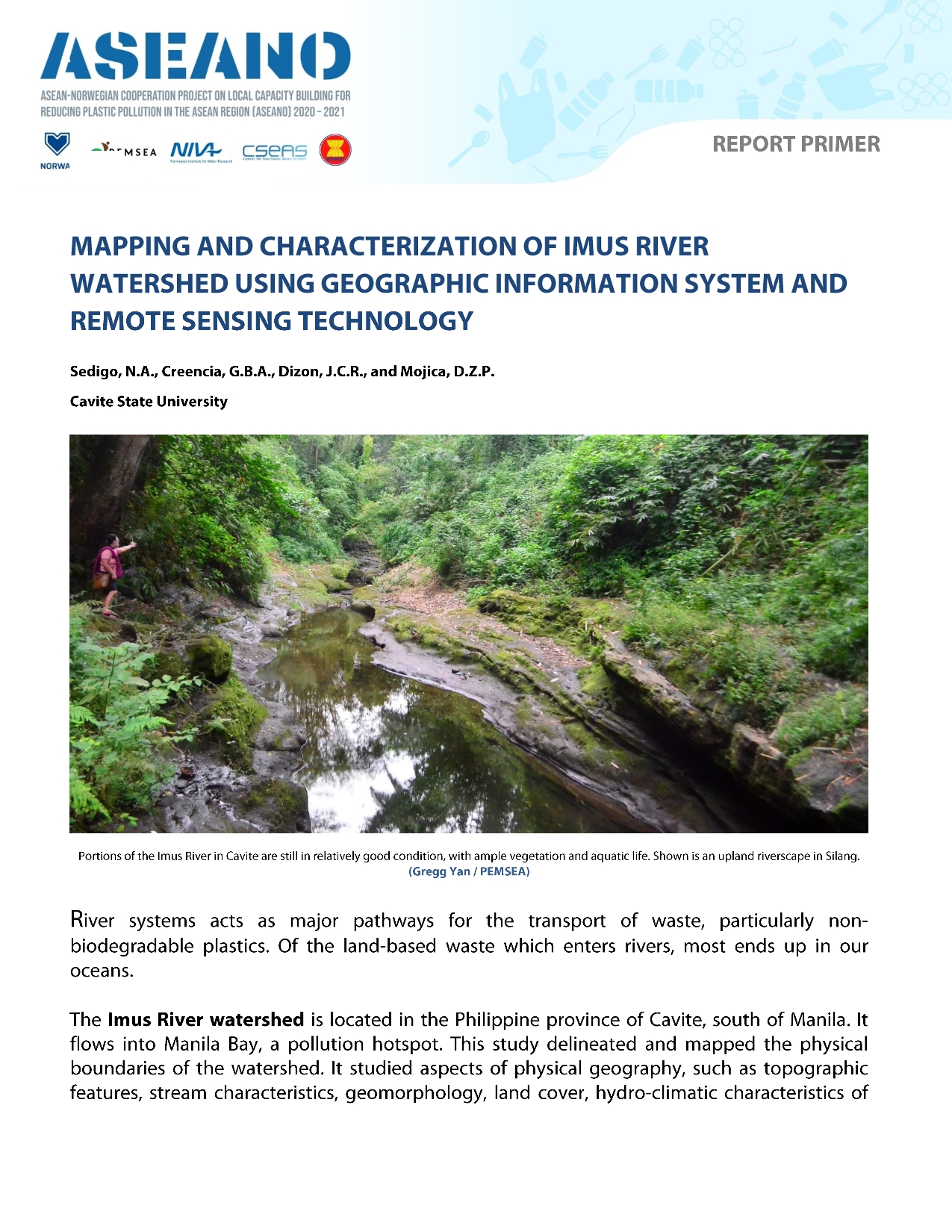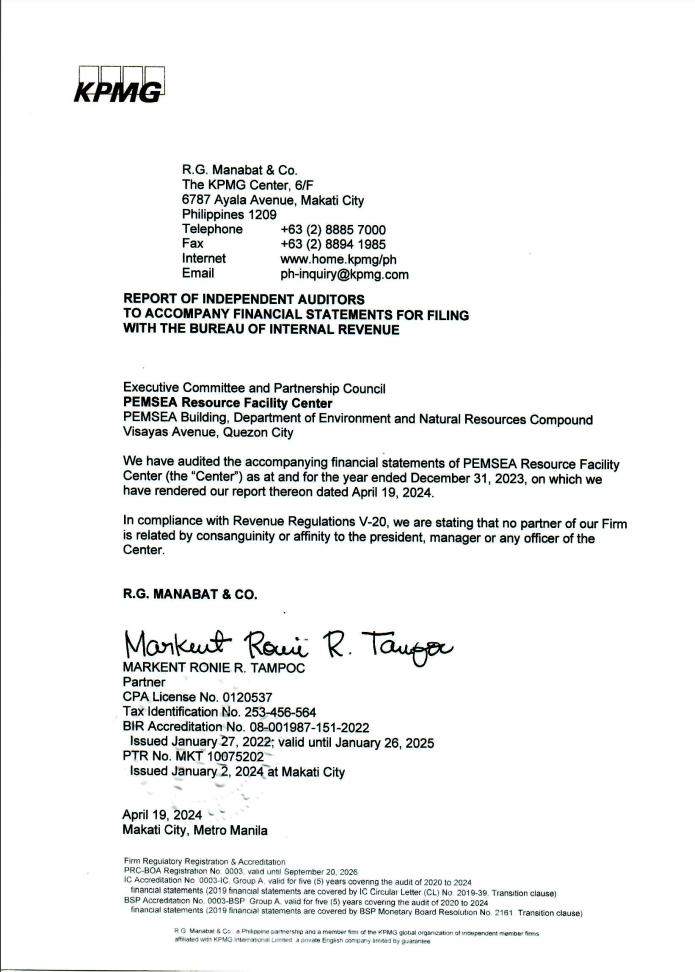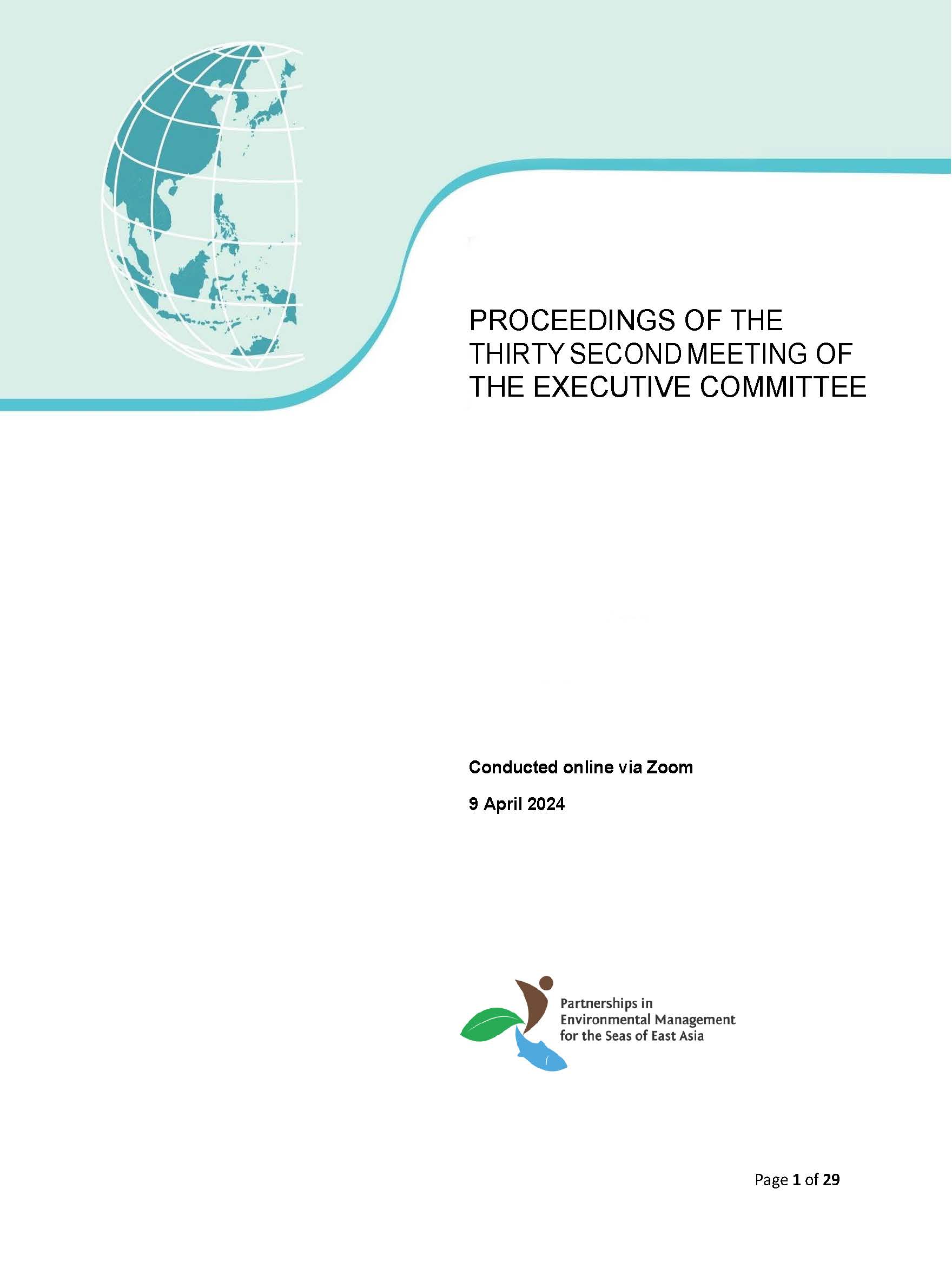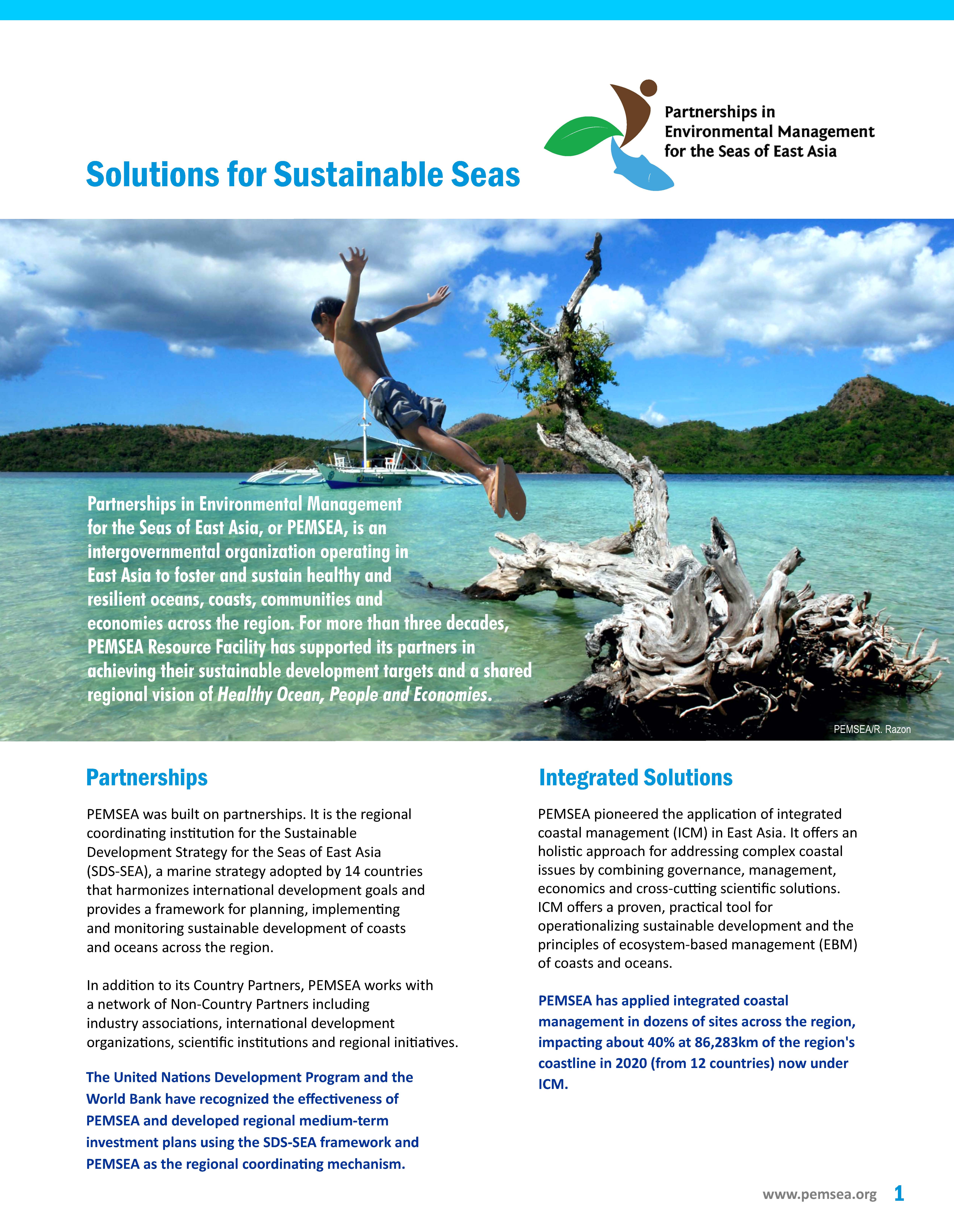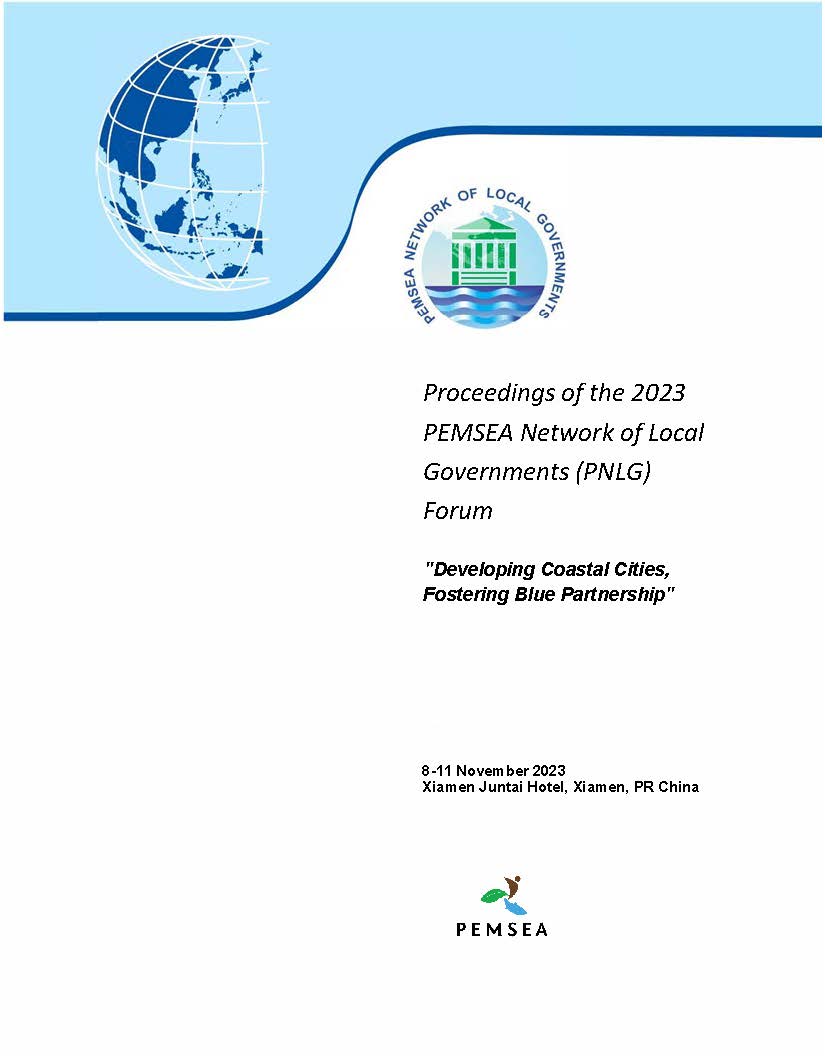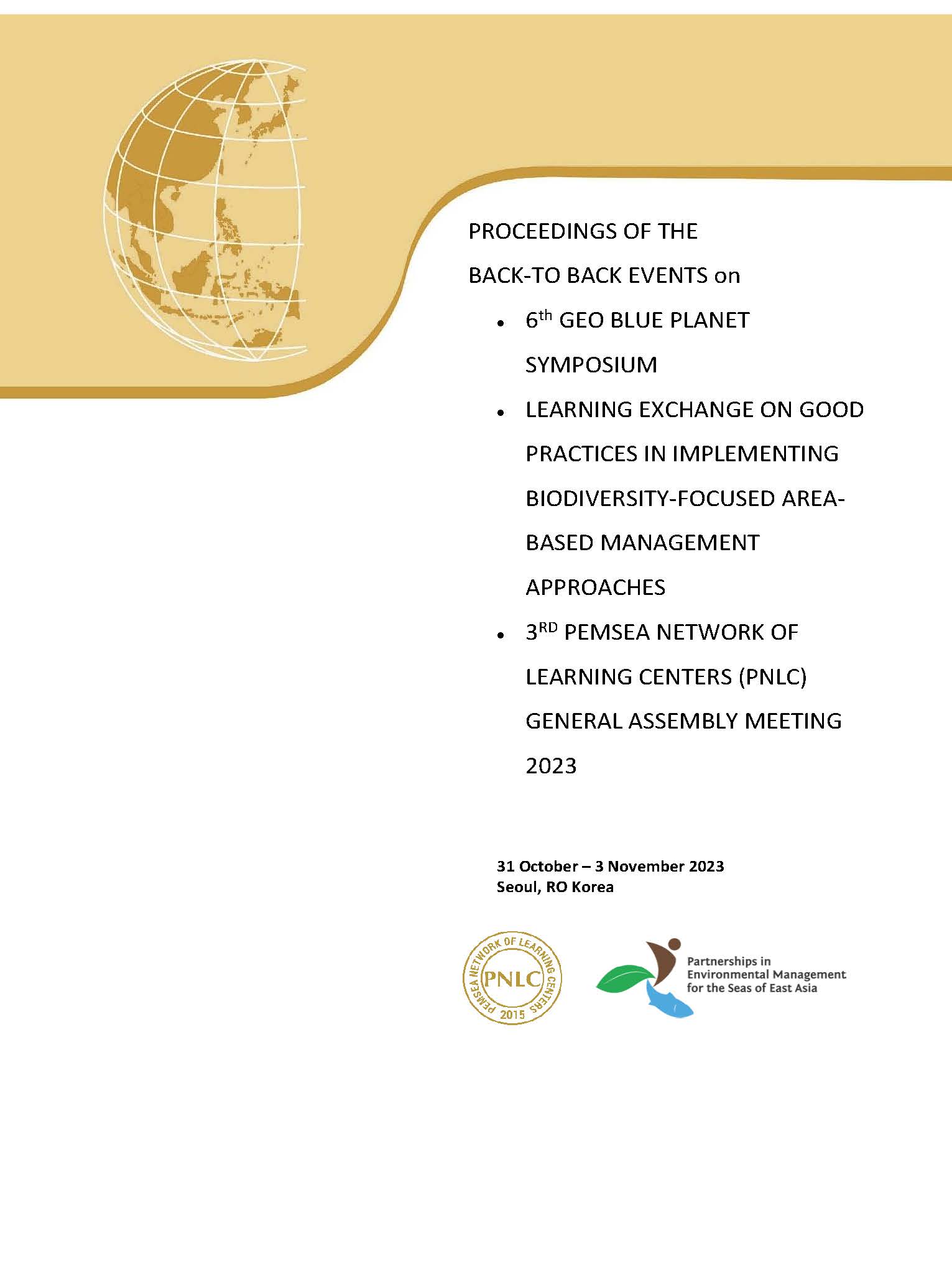
Breadcrumb
ASEANO Primer: Mapping and Characterization of the Imus River Watershed
PUBLICATION DATE:
Monday, April 18, 2022
PUBLICATION TYPE:
Reports
STATUS:
Only Available Online
DESCRIPTION:
Both primary and secondary data sources were used to make comprehensive land use maps, population maps, and hydro-climatic data analyses. The boundary of the Imus River watershed was established using a digital elevation model of the province of Cavite in ArcGIS. Sangley Point Synoptic Station in Cavite and the CvSU-PAGASA Agrometeorological Station in Indang were used to assess the general hydro-climatic condition of IRW due to their close proximity to the watershed.
RELATED PUBLICATIONS
-
Proceedings of the Thirty Second Meeting of the Executive Committee
The 32nd PEMSEA Executive Committee (EC) Meeting was conducted virtually on 19 March 2024 via Zoom. Participants of the meeting included the EC members , particularly the Chair and Co-Chair, Intergovernmental Session Chair and Co-Chair, the Technical Session Chair of the EAS Partnership Council (PC), and the Executive Director of the PEMSEA Resource Facility (PRF). Observers from the China PEMSEA Center, Ministry of Environment (MoE) of Cambodia, and Department of Environment and Natural Resources (DENR) of the Philippines also attended the meeting. PRF served as the Secretariat of the meeting.
DOCUMENT NUMBER DOCUMENT TITLE EC/32/DOC/01a List of meeting documents EC/32/DOC/01b Provisional agenda EC/32/DOC/02 Updates on the EAS Asian Seas Congress 2024 EC/32/DOC/02a Provisional Structure of the EAS Asian Seas Congress 2024 EC/32/DOC/03 Development of the 8th Ministerial Declaration EC/32/DOC/03a Concept Note and Draft Zero of the 8th MF EC/32/DOC/04 Global Trends and Opportunities Impacting the EAS Region EC/32/DOC/05 Updates on the 16th EAS PC Meeting -
Proceedings of the 2023 PEMSEA Network of Local Governments Forum (PNLG) "Developing Coastal Cities, Fostering Blue Partnership"
The 2023 Forum of the PNLG with the theme, “Developing Coastal Cities, Fostering Blue Partnership” was hosted by the PNLG and PEMSEA and co-organized by the PNLG Secretariat, PEMSEA Resource Facility (PRF) and Coastal and Ocean Management Institute (COMI) of Xiamen University (XMU). The forum was conducted on 8-11 November 2023 in Xiamen, China. The PNLG Forum was one of the key events of the Xiamen World Ocean Week.
The Forum was participated by over 130 participants from:
- 23 members from seven countries, namely: Cambodia, China, Indonesia, Malaysia, Philippines, RO Korea, and Timor Leste,
- 4 PNLG Associate members, namely the First Institute of Oceanography, Ministry of Natural Resources, China; Coastal and Ocean Management Institute (COMI) and Fujian Institute for Sustainable Oceans (FISO) of Xiamen University (XMU), China, and National Ocean Technology Center (NOTC) of the Ministry of Natural Resources, China;
- resource speakers and other invited experts,
- the PNLG Secretariat, and
- the PRF.
-
Proceedings of PEMSEA Network of Learning Centers (PNLC) back - to - back Events
The document contains the proceedings of three back-to-back activities that were conducted in Seoul, Republic of Korea from 31 October to 3 November 2023.
The activities include:
- The 6th Geo Blue Planet Symposium on Digital Solution for Sustainable Ocean Community on October 31
- PEMSEA Learning Exchange on Good Practices in Implementing Biodiversity Conservation-Focused Ecosystem and Area-based Management Approaches on November 1
- The 3rd PEMSEA Network of Learning Centers (PNLC) General Assembly Meeting on November 2
The activities were organized by the PEMSEA Resource Facility (PRF) with support from RoKorea Ministry of Ocean and Fisheries, the Korea Maritime Institute (KMI), and the Korea Management Corporation (KOEM), and the Korea Blue Carbon Research Center.
Participants include 39 representatives from 17 of the 21 PNLC members, officers, and staff from KMI, KOEM, the Korea Blue Carbon Research Center, and the PEMSEA Resource Facility (PRF).
